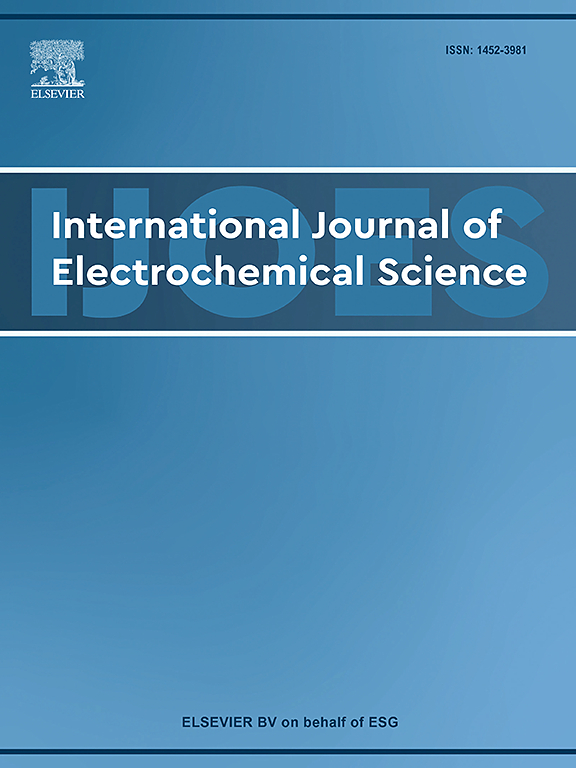Corrosion inhibition effect of Schiff base and its metal complexes with [Mn (II) and Cu (II)] on carbon steel in hydrochloric acid solution: Experimental and surface studies
IF 1.3
4区 化学
Q4 ELECTROCHEMISTRY
International Journal of Electrochemical Science
Pub Date : 2025-01-01
DOI:10.1016/j.ijoes.2024.100912
引用次数: 0
Abstract
This research explored the synthesis of a Schiff base and its metal complexes Mn (II) and Cu (II). The corrosion inhibition efficiency (% IE) of these compounds on carbon steel (CS) in 1 M HCl was studied at temperatures ranging from 25 to 55 °C by weight loss (WL) method. The inhibition effect was also studied by electrochemical impedance spectroscopy (EIS), and potentiodynamic polarization (PDP). Electrochemical testing results show that these compounds are particularly powerful inhibitors, which L-Cu provides a considerable inhibition (% IE) of 90.9 % at 9 × 10−6 M at 298 K. The results also demonstrate that the % IE of the three inhibitors increased with increasing inhibitor concentration, revealing that these compounds adsorb significantly to the steel surface. On the other hand, % IE decreased with raising temperature. The polarization curves indicated that Schiff base and its metal complexes acts as a mixed-type inhibitors. The Langmuir adsorption isotherm model accurately describes the adsorption of the investigated compounds. The high binding constant of Schiff base and its metal complexes showed a stronger interaction between the metal surface and the complex. The obtained data revealed that these compounds had remarkable inhibiting effects on the corrosion of steel in 1 M HCl. The thermodynamic activation and adsorption parameters were calculated. The data explained that the inhibition takes place through the physical adsorption. The surface morphology was characterized using a multi-technique. These analyses indicated that these compounds adsorbed onto the surface of CS by forming a barrier between the inhibitors and the vacant d-orbital of iron. The results obtained from both experimental and surface analysis methods were found to be in good agreement.
求助全文
约1分钟内获得全文
求助全文
来源期刊
CiteScore
3.00
自引率
20.00%
发文量
714
审稿时长
2.6 months
期刊介绍:
International Journal of Electrochemical Science is a peer-reviewed, open access journal that publishes original research articles, short communications as well as review articles in all areas of electrochemistry: Scope - Theoretical and Computational Electrochemistry - Processes on Electrodes - Electroanalytical Chemistry and Sensor Science - Corrosion - Electrochemical Energy Conversion and Storage - Electrochemical Engineering - Coatings - Electrochemical Synthesis - Bioelectrochemistry - Molecular Electrochemistry

 求助内容:
求助内容: 应助结果提醒方式:
应助结果提醒方式:


